Presented By: Partner Insights
The New City
BIDs and Neighborhood Associations: Changing the New York Metro Area’s Landscape
By Partner Insights October 29, 2018 8:35 am
reprints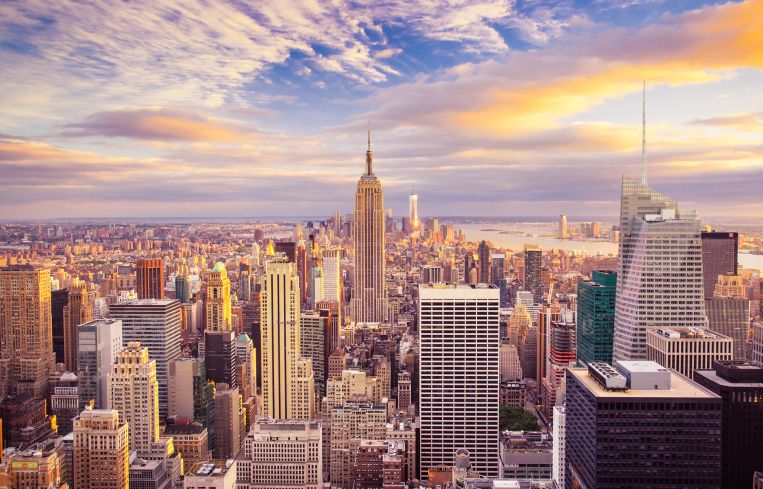
Business Improvement Districts (BIDs) and neighborhood associations are making great strides to ensure New York City and the New York Metro area remains vibrant and full of opportunity. Within New York City’s five boroughs, 59 districts and hundreds of neighborhoods, BIDs and neighborhood associations are powerful voices for individual communities. Each year, BIDs invest $148 million in New York City metro area neighborhoods, serve 93,000 businesses, and maintain 127 public spaces.
New York City’s 75 BIDs and hundreds of neighborhood associations have been so successful in their neighborhood-level planning and advocacy that the way New Yorkers live, work and play is a 180-degree shift from the way the city operated even 20 years ago.
That trend has spread to the surrounding suburbs as well. Beyond New York City, New Rochelle—25 minutes from Midtown—has embarked on an unprecedented downtown redevelopment initiative, slated to attracted more than $4 billion in new investment.
The Garment District Alliance, Downtown Alliance, Grand Central Partnership, City of New Rochelle and the Avenue of the Americas Association all represent communities seeking to enhance the economic vitality and quality of life for their residents and businesses.
Early History
BIDs and associations are created out of a need to enhance the economic vitality of an area. For example, the Avenue of the Americas Association was created by property owners in 1921 to block a city proposal to transfer the Sixth Avenue El from the roadbed to the sidewalks, which they feared would restrict pedestrian traffic. “When they were successful, they decided they should formalize their association to work collaboratively and proactively to enhance the Avenue,” says Bill Edwards, SVP and head of Core Holdings at Rockefeller Group.
The first order of business was a campaign for the demolition of the Sixth Avenue El. The Association’s vision was to recapture the prestige the Avenue once enjoyed. In 1924, work began to remove the northern section of the El from 53rd to 59th Streets. As tracks were being torn down, plans were being developed to replace old buildings with high-rise structures that included hotels, offices and apartments. Construction on Rockefeller Center began in 1930 and the first building was completed in 1932. Fourteen more buildings were completed in 1939 and an additional three by 1963.
In 1934, the Association proposed to Mayor LaGuardia “to build the Sixth subway now and put people to work.” Edwards points out that “the Association then devoted itself in the next decade to building a Sixth Avenue subway, secured the support of the mayor, and now we’re all still riding that line today on the B, D, F or M trains.” The new subway opened in 1940 with Mayor LaGuardia and John D. Rockefeller Jr. at the controls of the first train. Clearly an infrastructure change like that to the City’s established transportation network couldn’t have been easy but they accomplished it.
With these major achievements, the Association then turned its attention toward further enhancements for the Avenue’s businesses, workers and visitors. Efforts included upgraded zoning, the redesign and rehabilitation of Bryant Park, the substitution of buses for trolley cars, improved lighting for pedestrian and vehicular traffic, and the renaming of Sixth Avenue as “Avenue of the Americas” to better reflect the grandeur of the reconstructed avenue.
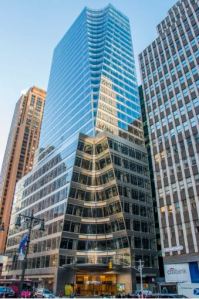
Funding BIDs
Governed independently, these organizations deal with issues that are often outside of the City’s budget such as maintenance, safety, hospitality, advocacy and business development. Each is run as a not-for-profit with an elected board of directors in charge of making key decisions.
Funding for BID programs is derived through membership fees, fundraisers, events, sponsorships, and grants. An average of 75 percent of funding comes in through special assessments that are billed to property owners within a district. The assessments, which are unique to each BID, are collected by New York City, which then redistributes the funds to the districts.
Fighting ‘70’s Urban Blight
In the mid-1980s, on the heels of New York City’s near bankruptcy in the late 1970s, property owners in the Grand Central District banded together to provide supplemental sanitation and safety services for their district to try to stem the mass migration of corporate tenants to suburban corporate campuses.
These services were provided by voluntary stakeholder contribution until 1988 when the Grand Central BID was officially formed. The BID’s president and CEO, Alfred C. Cerullo III, notes, “Thirty years later, we’re happy to say the conditions that led to our creation remain part of that distant past.”
A decade later in the mid-1990s, the Downtown Alliance was formed to revive Lower Manhattan, which had become a ghost town on nights and weekends, a forlorn area with graffiti on the sidewalks and storefronts. Companies were leaving one after the other.
“I think there was a clear sense that things needed to change, and the Alliance could be a real force for that change,” says Downtown Alliance president Jessica Lappin. “Our founding chair, Robert Douglas, did a lot to rally support for the cause. He had a sober message: If we don’t do this, then you can just write off Downtown.”
BIDs Gain Traction
The Garment District Alliance was formed in 1993 at a time when there were just a handful of BIDs, including Grand Central, 34th Street, and Times Square. But the balkanization of major New York City neighborhoods was already underway, according to Garment District Alliance president Barbara Blair.
“One concern was that all the bad street elements would get pushed here by those surrounding areas,” she says. “With challenges being faced by the industry and real estate interests, there was a lot of enthusiasm for this new type of neighborhood organization.”
Rebranding for a Comeback
New Rochelle, the upscale retail and entertainment suburb in Westchester County 25 minutes north of New York City, thrived for decades beginning in the 1930s when it held the title of the wealthiest city per capita in the state of New York and the third wealthiest in the country.
By the early 1970s, however, downtown New Rochelle was suffering from blight and the effects of urban renewal that many local businesses peg to the shuttering of Bloomingdale’s on Main Street. A New Rochelle Downtown BID was created in 2000 to spur economic development, new business and new investment. The BID’s mission includes assuring clean and safe streets, adequate parking and exciting downtown activities and events, while also preserving the charm and appeal of this commercial center as the historic heart of the greater New Rochelle community. However, the economic waves continued.
“About three years ago, we decided to take a step back and really rethink where we were and where we wanted to be,” says New Rochelle commissioner of development Luiz Aragon.
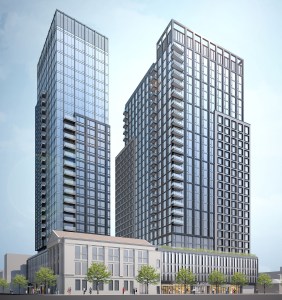
That process led to rezoning, rebranding and redeveloping downtown, which was instrumental in encouraging people to move back into the area, Aragon says, in the nearly three years since New Rochelle announced its downtown redevelopment initiative, more than 20 projects have already been approved.
Engaging Stakeholders
As one of the first BIDs in the city, the Garment District Alliance focused a large part of its early work on educating property owners and businesses about how BIDs work and what they can achieve. Against the backdrop of the recession the early ‘90s, property owners and businesses were resistant to pay more for services that many felt the city should be providing.
“We found that if you talk to people one-on-one and explain the theory and benefits, then they will be willing to make the investment,” Blair says. “More than 99 percent of the owners were supportive.”
Similarly, one of the earliest challenges for the Grand Central Partnership was also establishing trust with stakeholders who would ultimately be supporting this new organization financially.
“Ensuring buy-in to this relatively young concept of a public-private partnership—a concept today we accept easily—was certainly challenging,” Cerullo says. “Once that trust was achieved, creating effective strategies to revitalize the area given the general condition of the neighborhood, exacerbated by the state of Grand Central Terminal, which was also in need of transformation, was a challenge.”
New Rochelle’s Transformation
Today, there are literally thousands of projects in the works transforming the way New Yorkers live. The same can be said for New Rochelle, which conducted extensive research four years ago among local residents in outside areas like Brooklyn and New Jersey to get a consensus on how the area was viewed. Outsiders generally had a positive image of the area with recognition of the entertainment mall New Roc City while residents viewed it negatively as the forgotten city.
From this self-study, the tagline “Ideally Yours” was created. New Rochelle’s new image would be that of a family-oriented city where people can live, work and grow, with 10 percent of the community making up the downtown and 90 percent the quintessential suburb.
That effort paid off, ending in a rezoning of 300 acres of New Rochelle’s downtown. To make the project a success, New Rochelle partnered with master developer RXR Realty, one of the largest owners, managers and developers in the New York Tri-State area.
From there, the initiative entailed massive community outreach, connecting with people in person as well as crowdsourcing online. With one year of research, Aragon says they were able to formulate and propose a plan to the city council including a vision of developing 12 million square feet of new construction within those 300 acres.
As a part of the massive redevelopment project, the New Rochelle City Council adopted a “form-based code,” which addresses the look and shape of each building and how it impacts the urban environment. The form-based code also creates certainty for investors and encourages new developments with a faster approval time.
While other programs can take up to 10 years for approval, New Rochelle can now approve a project within 90 days when all of the proper paperwork and requirements are met. Aragon maintains that New Rochelle is the only municipality in the country that can do that, making it the fastest-growing city in Westchester County.
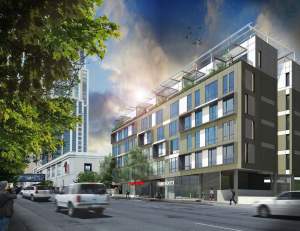
The City has also created a downtown arts & cultural district, designed to be a regional mecca for artists and innovators in line with the City’s vision to become the ideal setting to live, work and grow. The creative district will build on New Rochelle’s energetic arts scene by promoting a stable supply of performance space and affordable artist work and live spaces in combination with activities and events to draw in new audiences.
Downtown’s Diverse Tenant Mix
Ultimately, the greatest impact the Downtown Alliance has made over its 25-year history is to make Lower Manhattan a cleaner, safer and more forward-looking neighborhood, according to Lappin.
“We advocated 25 years ago for incentives to have residential conversions and it was a huge success,” she says. Now, three times as many people live Downtown as they did during 9/11. “And all of this collides with the diversification of the commercial tenant base, which is why you have Spotify and others choosing to come here.”
The growth of the residential population and diversification of the workforce has helped attract a number of top-tier chefs. The innovative roster includes big names like Danny Meyer, Keith McNally and Jean-Georges Vongerichten; all are opening restaurants downtown. Foodies are further tempted by events like the annual Dine Around Festival where people can come out to taste food from different vendors in the neighborhood.
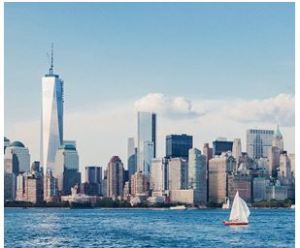
These successes come despite several seemingly insurmountable obstacles, including 9/11, the recession of 2008 and Superstorm Sandy. Even with these setbacks, Lappin points out that the past five years have brought outstanding growth making Downtown a “must see” destination for tourists.
Betting on the NYSE
In May, the Downtown Alliance began the implementation of an ambitious plan to improve the area around the New York Stock Exchange. The 80-page plan was developed by a committee of 30 stakeholders and a professional architecture firm. The plan will change the area significantly over the next 10 years with the development brought to fruition in stages, Lappin explains.
Other projects bringing people together in the downtown community include a collaboration workspace called Lower Manhattan HQ, where downtown companies can rent conference rooms or event space at affordable prices. The Alliance can also take credit for free wi-fi throughout most of the district. It also is exploring the idea of a last-mile consolidated delivery center around the New York Stock Exchange as well as a more innovative way to pick up residential garbage.
Zoning the Garment District
For the past decade, the Garment District Alliance has been working to have the City lift the overlay zoning in the district that favors maintaining space for manufacturers. “Apparel manufacturing has been diminishing nationwide for 40 years,” Blair explains. “Arbitrary zoning in the Garment District was no match for new trade agreements, the differential in the cost of labor between here and low wage countries and now, and tariffs on some goods that actually are being made here. The city needs to recalibrate to plan for the future.”
To that end, the Garment District Alliance participated on a steering committee convened by Manhattan Borough President Brewer and Speaker Johnson to work with the neighborhood businesses to develop clear goals on lifting the overlay zoning in the district while ensuring the manufacturing that still exists in the area is protected.

The rezoning for Hudson Yards in 2005, which included 25 percent of the Garment District, resulted in 42 new hotels with 12 more in the pipeline. The new hotels built as a result of the Hudson Yards rezoning bring in roughly 1.5 million people each year and pushed the employment rate in the Garment District to its highest since the 1950s, the heyday of apparel manufacturing.
Creating Spaces for the Public
Today, the Garment District enjoys a nice balance of Class A office on the avenues, particularly on Broadway, with many boutique restaurants and cafes that activate the side streets by adding dining options to the district, Blair says.
“With the highest pedestrian counts in the last 60 years—since the time when apparel manufacturing started moving south then eventually overseas—the challenge of managing public spaces, such as the new pedestrian plazas, and garbage has been critical,” she says.
The Garment District also looks forward to a permanent plaza on Broadway that was approved by DOT two years ago. Meantime, the BID has leveraged the plaza with plantings and programming, including art installations.
“Prior to 2009, there was virtually no place to sit in the district, with the exception of propping yourself on a fire hydrant,” Blair recalls. “We now have seating on the plazas. Additionally, during warmer weather, we have two street seat installations to extend the public space onto the side streets.” The creation of the public space along with cleaner streets and lighting 30 blocks of the district stand as the BID’s most significant accomplishments to date, she says.
Leveraging Technology
Like the Garment District and Downtown, the Grand Central Partnership is also undertaking some of the largest projects in its 30-year history. For example, the BID is leveraging sustainability technology to reduce energy use as it upgrades nearly 950 street light luminaires project.
“We have already converted our stadium-style lighting elements that light Grand Central Terminal’s exterior, and all of our illuminated street signs to LED,” Cerullo says. In addition to illuminating the façade of Grand Central Terminal, the BID has also been responsible for the illumination of the Pershing Square viaduct, and the restoration of the historic lighting in the 230 Park Avenue tunnels.
Also, over the past several years, the Grand Central Partnership has developed an innovative asset inventory and maintenance app that is critical to the BID’s ongoing streetscape beautification program not to mention its overall operation.
“After investing more than thirty million dollars into capital improvements within the district boundaries, we were excited to come up with a way to use technology to improve our management and operations, ensure effective and rapid response to damaged assets and other conditions around the neighborhood, and keep track of our highly regarded streetscape elements,” Cerullo explains.
Through Grand Central Partnership’s longstanding vision to provide additional public spaces to the district and the recent rezoning of Greater East Midtown, a few of the short-term public realm improvement efforts in the area now include Pershing Square West Plaza, Pershing Square East Plaza, a shared street concept on East 43rd Street between Lexington and Third Avenues, and the One Vanderbilt Plaza.
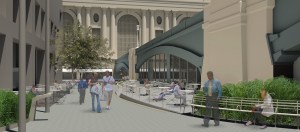
In addition, the organization is looking forward to the return of Grand Gourmet—The Flavor of Midtown this winter, an annual signature event created in 2000. The foodie event has been on a 3-year hiatus and showcases the district’s world-class restaurants, bars, lounges and food purveyors while supporting social service programs in the neighborhood.
The Annual Impact of BIDs
Each year, the City collects data from every BID. It comes as no surprise that the impact of these organizations on the neighborhoods is significant. For instance, all of New York City’s BIDs combined collect a whopping 4 million bags of trash each year and are responsible for the removal of about 300 incidents of graffiti each and every day.
As the streets have become cleaner and safer, BIDs have responded to the need to change public misperceptions about their neighborhoods. Grand Central Partnership has found success in partnering with a business community that’s committed to the creation of a 24/7 neighborhood that did not exist prior to the creation of the BID. This was all accomplished by unifying and beautifying the streetscape, “creating strong visual cues” that this neighborhood is clean, safe and well-maintained, Cerullo says.
As the “unapologetic powerbase of New York City,” Cerullo notes that Greater East Midtown is home to many of the most influential and innovative businesses in the world, which—along with its unparalleled transit options and the incredible shops, cultural institutions, hotels, bars, restaurants and visitors—make it the most connected neighborhood in the world.
In the 30 years since the creation of the Grand Central Partnership, the neighborhood has seen property values rise precipitously, retail and commercial tenancy hover near full occupancy, and investment and renewal skyrocket, all while crime and litter has plummeted, enhancing the quality of life for all who live, work and visit the neighborhood.
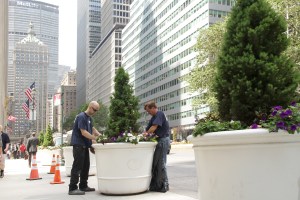
Welcoming Investors
Investment is key to building and growing a community, Aragon says, adding that New Rochelle attributes its impact on the district to its redevelopment initiative. With the option to develop quickly and efficiently, the City is seeing greater growth along with a tremendous response from people looking to invest in the area.
The Avenue of the Americas Association, which has seen record leasing in recent years not to mention more than $2 billion investment in infrastructure, highlights the best arts, culture and lifestyle that the Avenue of the Americas has to offer. The association’s members also enjoy unique opportunities to learn about City initiatives and hear from government, business and cultural stakeholders on issues that matter to the business community.
The Association acts on behalf of its members to address issues affecting business operations and real estate values on the Avenue. The group has become a who’s who of prominent community business leaders and major building owners on the Avenue who are committed ensuring that the Avenue will be a thriving business corridor for generations to come.
“At Rockefeller Group, we’re well into a $600 million redevelopment of 1271 Avenue of the Americas and now more than 70 percent pre-leased ahead of completion,” Edwards says. “That’s still my favorite project, but I also applaud the other owners who’ve renovated and repositioned their assets from Bryant Park to Central Park—and there really are too many to name. Specifically, I’m impressed with what the Hilton has done to add a better street-level retail experience.”
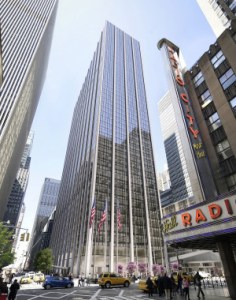
Because properties along the Avenue continue to be upgraded and transformed, according to Edwards, the Avenue generally has more office leasing activity than other Manhattans locations. “There’s a real correlation between investment and demand,” he says.
Opportunities for Change Abound
Despite the incredible success of the BIDs over the past 30 years, there are still many opportunities for positive change. Aragon says, “The future [of New Rochelle] may hold additional zoning that would include a portion of waterfront that was not originally included, creating linkages between downtown and the Long Island Sound, better connecting the City.”
For the Downtown Alliance, the area around Wallstreet, Broad Street and the New York Stock Exchange has a huge potential for growth. “It’s an area of incredible opportunity, where the root of our economic system was set up,” Lappin says. “With the rich history that took place there, in any other city, it would be the premier destination. While people come to see it, it doesn’t show the way it should and the BID hopes in the future it will receive the recognition it deserves.”
The Garment District will focus on fighting the misperception that it is still home to just one industry versus a diverse business sector in a neighborhood that has been activated. There are several physical improvements the Alliance would like to see as well. “We need a permanent plaza on Broadway; we need certain sidewalks widened; we need lighting on the avenues,” Blair says.
Cerullo of the Grand Central Partnership says, “The options that currently exist in this neighborhood and the redevelopment, re-envisioning, and reinvestment that is occurring is creating change that hasn’t been seen in years and will only help to enhance the reputation of the Grand Central neighborhood and Greater East Midtown into the future.”
It helps, of course, that the neighborhood’s stakeholders are the most successful business leaders in the world whose foresight 30 years go led to the creation of the BID.
BIDs as Partnerships
With more BIDs than any other city in America, there’s no question that the future of the New York City is bright. “The big problems—whatever they are—require public-private partnerships,” Downtown Alliance’s Lappin points out. “That’s what BIDs are—public-private partnerships—and that’s how you solve big problems.”
Blair of the Garment District Alliance, agrees. “Whether we are urging OMB [New York City Office of Management and Budget] to fund a permanent plaza or urging elected officials to come up with new and innovative solutions to the untenable problem of homelessness, panhandling and addiction that plagues Midtown Manhattan,” she says, “we are the voice of a better, safer district for all who live, work or visit.”



